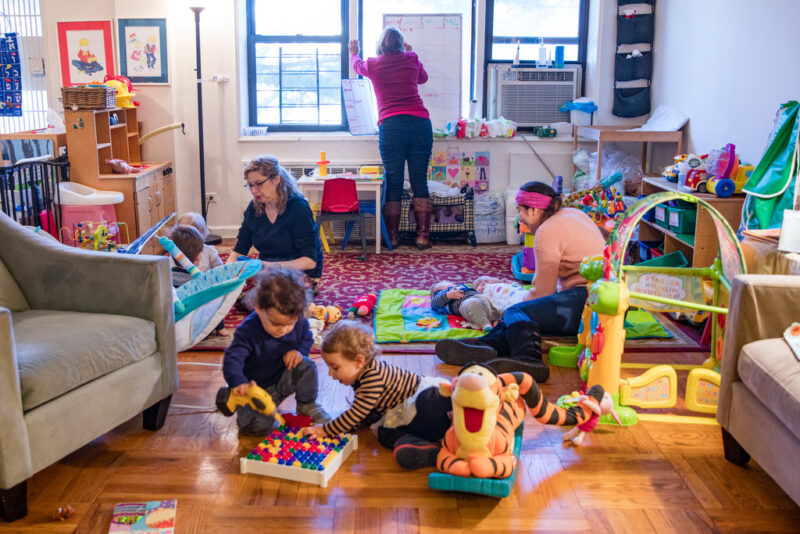When it comes to our family and those we care the most about, there is nothing we wouldn’t do, but we can also get too protective, and rightfully so, as there is so much bullying and violence out there. It all gest even more emphasized for those who had a bad experience, as they get even more protective of their family members.
Now, as for our special little ones, we can only do so much safety-wise, as at some point we need to let them experience the world on their own. However, this is a topic for some other day, and today, let’s focus on the law and, more particularly, California’s new Child Care Law.
What is it?

California’s new Child Care Law called SB-234 is great for all child care providers living in California, as by this law, they get much more freedom and independence for small child care homes. This law was first introduced in January 2024, and today, it is under federal law, meaning that it applies to everyone living in CA. If we read between the lines, it is a great addition to an already existing law on this matter, further enhancing the ability of, mostly, small care homes to avoid eviction just because of this reason. Of course, this law is for licensed small child care homes.
What does it mean?
The basics are that no one can ask you to get zoning permitting or get a business license, which makes the expansion of small family child care homes into larger ones much easier and less expensive. Furthermore, the bad and unfair treatment that providers of these homes suffered by landlords in the past was the main reason why this law saw the light of the day. Now, there is no more complicated documentation, but there is also much more room for advancement.
There are big and small family child care homes

First, we need to mention that there are two sizes of these types of institutions, and regarding that, we have small family child care homes and the big ones. When it comes to the first ones, their capacity is between 6 and eight children, while the big ones can care for 12-14 kids.
Once you decide to open a small caring home, there is no need to fill in different papers if you choose to make it big because the requirements are the same. If you are meeting the requirements for living, it is your right to change the number of children you can care for (if there is enough space and conditions allow that). Of course, as for the licensing, you will also need to apply and meet requirements for obtaining a permit to become a provider of a family child care home.
It can be located everywhere
This new law implies that it is not necessary to think about business licenses and zoning permits if you want to open a child care home. It needs to be treated like every other living home, and no one has the right to ask for any permission. Those institutions can be located almost everywhere, from apartments, townhomes to multi-family buildings, and no one can forbid that.
That means that landowners cannot evict you or forbid you to open the child care home if you want to open it and meet all the necessary requirements. If they decide to try to eject you because of that, you can always complain since it is your right regarding the new law, and no one can stop you. It is in the domain of your rights, and if someone experiences this, they will win at the court.
There are no special rules

Keep in mind that no one can ask you to follow some special rules while running a child care home. The rules and regulations are the same as for any person in the neighborhood, and it is illegal to ask for some special requirements. That means that no one can ask you for some special permission and stop you from opening or running a child care home of every size, try to delay it, or stop it completely. If one has a permit, meets requirements, and wants to open one, nothing can stop you.
Additional school-aged children
The only situation when we need a landlord’s approval for our child care home is when we want to add two children that are school-aged. In most cases, we will get permission, but we need to ask for it to avoid any future problems.
It is not something that will take too much of our time, but it is better to be sure that we have all the necessary documents for proper operating. Beware because if the landlord wants to evict you but now has no right to do so, have all the necessary paperwork as they will use even the smallest mistake against you.
Changing the location

If we need to change the location of our child care home because of any reason, we need to check the requirements of the future neighborhood. We need to be familiar with zoning or building requirements, but the law is still on our side, so we need to respect similar rules as any other person that lives in the neighborhood. The physical movement of child care homes does not have any special requests, and we are moving as regular renters.
The bottom line
As you can see from these tips mentioned above, this new SB-234 law regulates precisely those situations that caused so much stress before. It makes everything much easier, and, in the end, if one has the permit and meets all requirements, why would there be anything stopping or making the provider’s job more difficult.
Hopefully, this is just the beginning as there still are certain things and aspects that can be further regulated and implemented, but, for now, this is a step in the right direction. For those who want more info on this topic, you can always check https://www.dcins.com/blog/5-things-to-know-about-californias-new-child-care-law.html dcins.com and get a detailed explanation followed by some advice.

